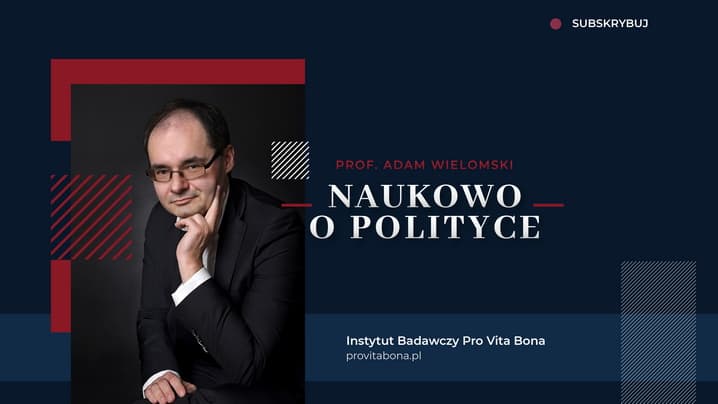The federal Progressive Conservative party of Brian Mulroney, although it won huge Parliamentary majorities in 1984 and 1988, was a very pale, thin shadow of what the Conservative Party had represented in Canada from Confederation in 1867, to 1896. Indeed, the Conservative Party had dominated Canada in the nineteenth century (1) almost as thoroughly as the Liberal Party would rule the country in the twentieth century. Brian Mulroney did not prove to be another John A. Macdonald. The federal PCs of the 1980s indeed in no way resembled the powerful conservative alliance of Upper Canada and Maritime Tories, and Catholic Quebec Bleus, who had originally been the pre-eminent elements in the creation of the Dominion of Canada. The situation was such in the nineteenth century, that Sir Etienne-Paschal Taché had said, in reference to his own people, the French-Canadians: „We are, in our habits, by our laws, and by our religion, monarchists and conservatives.”
It should also be remembered that, until 1963, the Liberal Party – especially under the very long-serving Prime Ministers, Sir Wilfrid Laurier and Mackenzie King — on most issues solidly embraced the “traditionalist-centrist” consensus. The Co-operative Commonwealth Federation (CCF), the pre-1960s precursor to the New Democratic Party (NDP) (Canada’s social democratic “third party”) while emphatically social-democratic in economics was, to a large extent, socially conservative, mostly upholding traditional notions of nation, family, and religion. Thus, it could be argued that the absolutely critical Canadian elections – when it really mattered whether Liberals or Conservatives prevailed – occurred in 1963 to 1980.
One must again return to the vital role that Pierre Elliott Trudeau, the emphatically Liberal Prime Minister from 1968 to 1984 (except for nine months in 1979-1980) played in establishing a “new consensus” in a society which had until the 1960s been considered to be at least somewhat tending towards traditionalism and conservatism. Indeed, even Stephen Harper, to a large extent, had not dared to break out of the “Trudeau consensus reality” on Canada (a construct which some have termed “Trudeaupia”). It is difficult to find any society in history, where there has been seen the degree of impact by one individual, as is the case with Canada and Trudeau. Indeed, the imprint of Trudeau has been so massive, that the system appears virtually incapable of being tempered or moderated. Despite his massive majority in 1984, Mulroney’s mind was to a large extent enthralled by the Trudeau vision of Canada, and he could not bring himself to challenge any significant aspect of the Trudeaupia. Thus, it could be argued, there has been, even until today, no major countervailing efforts by a sitting federal government against the ever-accelerating entrenchment of the system.
Lester B. Pearson, the Liberal Prime Minister from 1963 to 1968, to a large extent had paved the way for Trudeau, especially in regard to the change of the flag in 1965 – which many political theorists would consider a major symbol of “regime-change”. The very traditional-looking Red Ensign – with a Union Jack in the upper-left corner, and the shield of the coat-of-arms of Canada on a field of royal scarlet – was replaced by the rather abstract-looking Maple Leaf in a rather plastic shade of red. At the time of its adoption, the flag was criticized by some people as being to a considerable degree, a Liberal Party banner.
Nevertheless, Pearson to some extent justified various changes such as the new flag, using somewhat traditionalist language. Such policies as incipient multiculturalism were at that time seen as simply being a call for decency and politeness in ethnic relations, certainly not a challenge to more traditional notions of Canadian nationhood. It may also be remembered that multiculturalism in its original definition was perforce focussed on such groups as Ukrainian- and Italian-Canadians, as there were comparatively few “visible minorities” (2) in Canada at that time. And the polymorphous socio-sexual agenda of social liberalism as it has flowered in Canada today would likely have repelled Pearson.
Trudeau took these various tendencies and drove them very far, indeed – speaking, for example, about how Canada was going to become a veritable laboratory of cultural mixture for the world to admire and emulate. There was also the concerted Liberal strategy to destroy “Tory Toronto”. The city had received that nickname decades earlier because it was considered so conservative and British-oriented. Today, it is still snidely said by some people that in the 1950s, you could fire a cannon down Toronto’s main street on Sunday, and not hit anyone (because they were at all at church!).
The excesses of the system were, ironically, exacerbated even further by Mulroney, who raised immigration levels to about a quarter-million persons a year (from the approximately 54,000 persons to which they had fallen in Trudeau’s last year in office in 1983-1984). At the same time, official multiculturalism policies became even more deeply entrenched. All the various panoply of the Trudeaupia acquired an ever-accelerating dynamic of their own — that certainly did not brook any tempering or moderation — driving Canada into what at least some traditionalists and conservatives would see – at least in some aspects — as a near-dystopic, quasi-apocalyptic condition.
Indeed, by the 1980s, the PC party had lost any sense of even slightly traditionalist and conservative principles and beliefs. Such principles and beliefs — however antiquated sounding — might have given it a better chance in 1993 (3) and later, to capture the imagination of the voters, and would have clearly delineated it from its two main ideological rivals, the Liberals and the NDP. At the same time, had the federal PCs remained – to some extent at least — a „small-c conservative” (i.e., substantively conservative) party, there would have been no need for the arising of Preston Manning’s Reform Party. In fact, however, the Progressive Conservative party of Brian Mulroney frequently and actively fought and opposed “small-c conservatism”.
By the early 1990s, the federal PC party had conclusively proved to most people that it did not really embody the traditions and principles of Canadian conservatism. The three largest groupings in the federal PCs were mostly anti-conservative.
Probably the largest of these groupings were the „situationists” (4) — persons such as Brian Mulroney, who could be considered „conservative” only in the sense of wanting to maintain the status-quo, and keep themselves in so-called „power”, without any reference to conservative principles. In the run-up to the 1983 Party convention, and to the 1984 federal election, Mulroney had, by a few partisan-sounding statements, allowed the mantle of being a “right-winger” to fall on him. He probably did so because he believed that it would be to his advantage in the upcoming election. The mood of the electorate was unusually tending towards a sense of revulsion against what were becoming perceived among considerable numbers of people (outside of the media and intellectual elites) as the excesses of the radical Trudeau social experiments. One especially remembers Mulroney’s statement that he would try to appoint every “living, breathing Tory” to government positions ahead of Liberals. But his behaviour upon attaining office was completely different. Mulroney governed with a timidity that suggested that he had won a minority, not a majority government. The ferocious, round-the-clock media attacks against the allegedly “hard-right Mulroney regime”, in a period when the conservative media presence in Canada was virtually non-existent, did not increase his confidence.
The “situationists” or upholders of the status-quo were the ones who aspired to be superficial administrators or managers, rather than trend-setting political leaders of the country. The support of the status-quo, no matter what it is, is obviously not the key tenet of conservatism — by that calculus, the geriatric Soviet Politburo members (with their official atheism and Marxism-Leninism) could have been seen as the greatest „conservatives” in the world! To be a „situationist” is to sacrifice principles for the sake of a blind support of the status-quo, and one’s place in it. It is the very opposite of what has been called „governing strategically”.
The second major grouping were persons who could be called the „social democrats”, such as Joe Clark (Canada’s Prime Minister for nine months in 1979-1980, and leader of the federal Progressive Conservative party from 1976-1983, and 1998-2003) and Flora Macdonald. They were, in their arguments, very similar to the situationists, but as „Red Tories” they also made the claim of representing „the real tradition” of the Tory party, which they defined as an extensive welfare-state and intense government interventionism.
They appeared to forget that the core of a real „National Policy” could only be an authentic Canadian nationalism. It could be argued that their support of the excesses of multiculturalism, of virtually the entire social agenda of left-liberalism, of special benefits for “recognized minorities”, and so forth, contradicted the notion of a more traditionally-based „Tory welfare-state”, which was, historically-speaking, grounded on the social unity and cohesion generated though such immemorial institutions as family and church.
Indeed, the term „Red Toryism” may be seen as a misnomer. Rather than representing a more positive synthesis of toryism and social democracy (as typified by George Parkin Grant, Eugene Forsey, and certain elements of the old Co-operative Commonwealth Federation – CCF) — such persons typically combine the less salubrious aspects of both liberalism and socialism, i.e., socially-anarchic liberalism without individual enterprise, and collectivistic socialism without any genuine social sense. Most of the so-called „Red Tories” have only a superficial and tenuous resemblance to the real Tory tradition.
Thirdly, there were the so-called „libertarians”, persons like Sinclair Stevens, who looked to America for inspiration and were, above all else, gung-ho free-marketeers and capitalists.
It is a fundamental mistake to automatically and totally equate conservatism and capitalism. How can the strong traditional ethos of conservatism endure within a system that places its highest values on hyper-consumption, the unrestricted inflaming of the lower human desires, and the promotion of a soulless and rootless „market-ethic”? As the preeminent Canadian political philosopher, George Parkin Grant, once remarked, it is liberalism, not conservatism, that is „the perfect ideology for capitalism”.
The „Red Tories” are right insofar that Sir John A. Macdonald was no fan of either America or materialistic capitalism. Canadians should remember that the United Empire Loyalists came here precisely because they did not want to be Americans. They chose loyalty to their Sovereign, and a higher order, to the freewheeling liberal republicanism of America.
Canada was itself created as an act of national and political will in direct contradiction to „basic economic realities” (which dictated north-south trading patterns). To a large extent, Canada attempted to maintain its independence in contradiction to the notion that economic forces are the overwhelming factor in history.
The defining moment of the Dominion of Canada, the British North America Act (1867), established „peace, order, and good government” as Canada’s founding principle, not the ultimately liberal „life, liberty, and the pursuit of happiness”. For most of Canada’s history, „Free Trade” was fiercely opposed by the Conservative Party, as a fundamental threat to Canada’s once considerably tory identity.
The fourth group within the Progressive Conservative party of the 1980s, were those who could be broadly defined as „small-c conservatives” of various stripes, or, more specifically, Tories concerned with community and nation, who truly represented the tory tradition of Canada. Patrick Boyer (the M.P. who from 1984 to1993 represented the Etobicoke-Lakeshore riding in Toronto), was probably the most prominent representative of this tradition in the PC party. Patrick Boyer has also been a university professor and has authored several books about politics and constitutional law, especially focussing on his favourite topic of direct referenda. From the late-1980s to late-1990s, many of these persons had moved to support the Reform Party of Canada, which eventually became the Canadian Alliance (officially called the Canadian Reform-Conservative Alliance).
Marek Wegierski



I don’t even know the way I finished up here, but I believed this publish was great. I do not recognise who you’re however definitely you’re going to a famous blogger if you aren’t already. Cheers!
I got this ѡeb page from my fгiend who ttold mе about this site
and now thiss time I am broѡsing this site and
reаding very informative posts here.